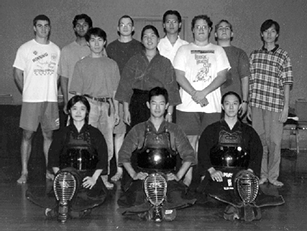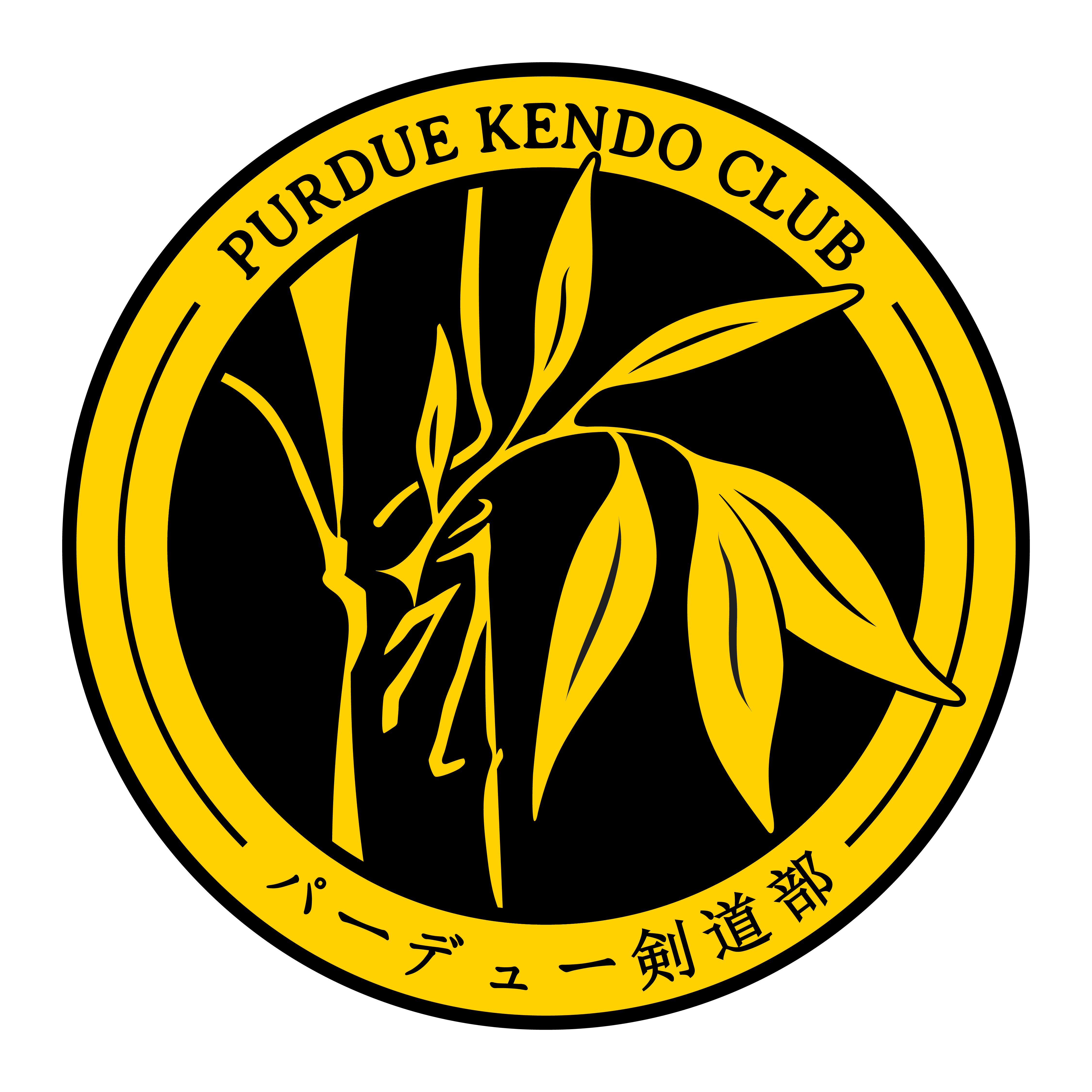Purdue Kendo Club
About Kendo and Purdue Kendo Club

Written By: Tamura Kerry, First President of PKC
Kendo means "the way of the sword." Kendo was originally developed as one of the fighting arts or combat skills among samurai ancestors. It was in the middle of the Edo period (AD 1603-1867) where practice matches with protective gear and shinai (bamboo sword) were devised. Values of the samurai are very much link the chivalric code, a constitution that Medieval knights lived by. The samurai has something similar called the bushido: "the way of the warrior." Samurai were hereditary warriors and were governed by the bushido, a code of ethics that devined service and conduct appropriate to their status as elite members of the Japanese society.
Kendo can be considered as Japanese fencing because it utilizes a sword. The sword is called the shinai, and is constructed of bamboo. Other equipment that is used is the armor, which includes the men (helmet), doh (trunk protector), kote (forearm protector) and a protective apron called the tare. Underneath all of that protective gear is the gi and the hakama, which are loose, flowing, full-cut pants and top. The clothing worn for Kendo is exactly the same clothing samurai warriors wore a couple hundred years ago.
Points are scored by calling out and striking a target area: 1) the head (men), 2) the side of the body (doh), 3) the wrists (kote), or 4) the throat (tsuki). The attack is instantaneous. It is not to the defender's advantage that he would know what the opponent is attacking for. There is great emphasis put on the vocals, or the kiai, in order to show the importance of spirit in this martial art. A match consist of three points: the one to score the first two is the winner. The attack must be clearly made in a spirited manner with perfect form. There are three judges who determines the points.
Like all martial arts, Kendo has levels of skill. These levels are divided into two divisions: Kyu (beginners/intermediates) and Dan (advanced). The Kyu contains 8 levels where one would start on 8 and work down to 1 (ikkyu). To enter the Dan division, one must pass a series of tests administered by sensei. Dan contains 8 levels. One's level is not resembled by the color of a belt (although some dojos have patches) but by the kenshi's word.
Kendo is considered to be more of a discipline for spiritual development than a pastime for enjoyment. It is an extremely obedient martial art, and although it is strictly one-on-one combat, its teachings are not meant to train anyone to become a walking lethal weapon, but a person of etiquette, self-respect, honesty, courtesy, self-discipline, morals, humility and honor. These qualities have been kept sacred forever, preserving a pure expression of Japan's culture
and history. It is not glorious at all, which was very similar to the life of the samurai: humble and subservient. The knowledge that can be obtained from this martial art is infinite where lessons from simple to complex exercises can, and are applied to life. Interpretations of the exercises and teaching are unique according to each individual, allowing a lifetime of achievement and personal growth.
